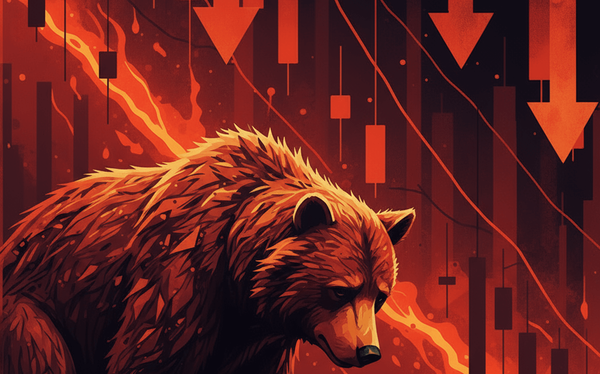Understanding bull run, bear market and everything in between
Bull market or bear market - what’s the difference, really? Understand how each phase works, what it means for investors, and why the cycle matters.

The stock market often moves in cycles — commonly known as bull markets and bear markets. Understanding these cycles is key for any investor. Whether you're a short-term trader, a long-term value investor, or someone who follows technical charts, knowing where the market stands can help you manage risk, spot opportunities, and make smarter decisions. Bull markets can create strong momentum and quick gains, while bear markets test your patience and strategy. The more you understand how these cycles work, the better prepared you'll be to adjust your approach and stay ahead. Let's break it down further.
Understanding market cycles
The stock market tends to move in cycles, patterns of ups and downs that repeat over time. These market cycles are shaped by things like economic data, investor mood, and broader global trends. While they don’t follow a fixed schedule, they usually swing between periods of growth (bull markets) and slowdowns (bear markets). Knowing where we are in the cycle can help you make smarter investing decisions.
There’s also something called the settlement cycle, which is just the time it takes for a trade — buying or selling a stock — to be fully completed. It’s when the shares are transferred to the buyer, and the payment is finalised.
The bull run

A bull market is when stock prices keep rising steadily — usually by 20% or more from recent lows. It’s a phase that reflects strong investor confidence, economic growth, and healthy business performance. During bull markets, people are generally more willing to take risks, and many investors use this time to build long-term wealth.
While it’s an exciting phase, it’s also easy to get carried away. Stocks can become overvalued, so it’s important to stay grounded, keep an eye on market fundamentals, and be prepared for possible corrections. Most investors in a bull market choose to hold stocks long term to ride the growth wave.
The bear market

A bear market is when prices in the stock market fall steadily — typically by 20% or more from recent highs. It often signals an economic slowdown, with falling investor confidence and a general sense of caution. During this phase, many investors shy away from riskier assets and move towards safer options like gold, bonds, or defensive stocks.
While bear markets can feel uncertain, even stressful — they also bring opportunities. For long-term investors, it can be a good time to pick up undervalued stocks at lower prices, with the hope of gains when the market recovers. The good news? Bear markets don’t last forever — they’re part of the cycle, and growth usually follows.
The exact difference
Between bull and bear markets
Markets don’t always go straight up or down, there are in-between phases that can be tricky to navigate but are important to understand. Knowing how to spot these can help you make smarter investment moves. Let’s break them down:
- Sideways Markets
This is when prices move within a narrow range for a while — neither going up nor down in a big way. Investors often feel unsure in this phase, so trading volumes tend to stay low. - Market Consolidation
After a strong rally or a steep drop, the market often takes a breather. Prices start to settle, volatility is low, and many traders take this time to rethink their positions. - Sector Rotations
In this phase, money shifts from one industry to another based on economic changes. Spotting these moves early can help investors adjust their portfolios and focus on sectors that are gaining strength. - Volatile Fluctuations
Here, the market swings sharply — but without a clear trend. This can be triggered by anything from inflation worries to earnings surprises or global events. Tools like the fear index (VIX) can help gauge how nervous or confident the market feels during this time.
These phases may not be as obvious as bull or bear markets, but understanding them can give you a real edge.
Points to consider
- Smart investors don’t try to time the market, because let’s be honest, no one can predict exactly where it’s headed. Instead, they focus on building a portfolio that can handle both ups and downs.
- In a bull market, it's tempting to chase high-growth stocks, and that can lead to great returns. But it’s still important to diversify your investments across different sectors, asset classes, or even geographies to reduce risk, especially when stocks are priced at a premium.
- In a bear market, holding on to your capital and avoiding risky bets is often the smarter move. It’s a good time to strengthen your portfolio and maybe even buy undervalued stocks — companies that are trading below their real worth — so you’re well-positioned for the next market rebound.
Final thoughts
The secret to sustainable returns isn’t guessing where the market is headed — it’s about understanding the cycle and adjusting your strategy along the way.
If you can stay patient, disciplined, and open to opportunities — even during tough market phases, you’ll be better positioned to build a strong, long-term portfolio.
So whether you're in a bull market or a bear market, take time to understand the trend, stay focused on your goals, and invest wisely.
That’s how you grow — steadily and confidently.




